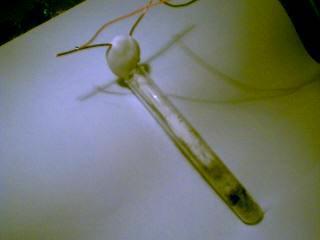
 .
.


| Quote: |
| Quote: |
| Quote: |
| Quote: |



| Quote: |





 would be too big for your burner but you could get some design
parameters from them and then make your own as you have your own industrial laboratory. This might be an effective sulfur fired torch.
would be too big for your burner but you could get some design
parameters from them and then make your own as you have your own industrial laboratory. This might be an effective sulfur fired torch.



| Quote: |
 --- easy enough to put out though...)
--- easy enough to put out though...) 






 )
)

 . Anything can be threaded
(well, as long as it's lower on the hardness scale than the tool, and not made of glass or something like that).
. Anything can be threaded
(well, as long as it's lower on the hardness scale than the tool, and not made of glass or something like that).







 Reminds me of the time I had to hold on a pot
that was roasting on the stove for the last 10 min (with my bare hands
Reminds me of the time I had to hold on a pot
that was roasting on the stove for the last 10 min (with my bare hands  ) because I
didnt have a place to put it, and if i dropped it, Id have lost my dinner. My fingers where burned shiny... ouch....
) because I
didnt have a place to put it, and if i dropped it, Id have lost my dinner. My fingers where burned shiny... ouch....| Quote: |
| Quote: |

| Quote: |
| Quote: |

| Quote: |

| Quote: |
| Quote: |
| Quote: |

 )
)
 </b> I'll RE-CAST it, in the same stainless oven
form with the track
</b> I'll RE-CAST it, in the same stainless oven
form with the track

| Quote: |
| Quote: |
| Quote: |

| Quote: |
| Quote: |
| Quote: |
 .
.| Quote: |
 .
.

| Quote: |
 Masturbation works wonders as workout.
Masturbation works wonders as workout.| Quote: |
| Quote: |
| Quote: |



 )
)| Quote: |
